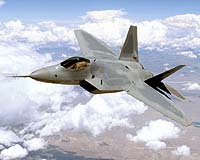| . |  |
. |
London, UK (SPX) Jul 22, 2009 Senior figures form the British military and from coalition countries along with MOD scientists and engineers gathered recently to discuss strategy and tactics in countering the Improvised Explosive Device threat in Afghanistan. In a month that opened with the deaths of seven servicemen in as many days, there could not have been a more poignant backdrop for the Counter Improvised Explosive Device (IED) briefing for senior officers at the Defence Academy. Gathering at the Defence Capability Centre to discuss strategy and tactics were Chief of the General Staff General Sir Richard Danatt and top brass from the UK military and from coalition countries, senior personnel from the MOD and other government departments along with scientists and engineers from the Defence Science and Technology Laboratories. Vice Chief of the Defence Staff General Houghton said at the briefing: "At a human level we all have an absolute desire to minimise death and injury and reassure the troops and their families that we are doing everything we can to defeat the IED threat. There has been an operational switch by the Taliban who are using IEDs to try to undermine international willingness to stay the distance to achieve our long term objectives." The statistics are grim. IED incidents have increased this year by 114 per cent compared to the same period last year. In June, there were 807 events in Afghanistan. Of those killed in action, 73 per cent of the fatalities were caused by IEDs. A huge amount has been done under the Urgent Operational Requirement process to mitigate the threat through the provision of heavily armoured vehicles such as Mastiff and the introduction of device clearing systems such as Talisman. Equipment is being developed to protect troops from the threat. But this in itself solves only part of the problem. Just as sixteenth century knights had to abandon their heavy suits of armour when they faced the new threat of gunpowder, so the strategy to combat IEDs involves much more than developing protection. Lieutenant General Simon Mayall, Deputy Chief of the Defence Staff (Operations), said: "IEDs are simple, cheap and deliver a disproportionate effect and have become the weapon of choice of an agile and responsive insurgency . So having only a defensive approach to dealing with them is not sufficient." As protection improves, so the roadside bombs get bigger. Following the thinking voiced by Dr David Kilcullen of the Australian Army to "look behind the IED and get to the network that placed it," the strategy is to get off the back foot and adopt an offensive stance. While continuing the development of protection, increasingly effort and expertise is being put into attacking the networks that produce and plant IEDs, and into preparing all military personnel to be able to deal with IEDs "to the left of the bang," as Brigadier John Lorimer from PJHQ put it. Attacking the networks will be achieved by linking technology, training, tactics and procedures and intelligence to go after those who finance, plan and plant the bombs. Analysing data gathered from recovered IED material and information from captured insurgents and combining this with surveillance material, which includes building up an understanding of the pattern of life on the ground will take the fight to the Taliban. To maximise the effect of this, technology and tactics amongst the coalition countries must be integrated, and communications networks must be able to talk to each other: "The insurgent has chosen to put his strength up against our weakness," said General Dannatt. "It forces us into bigger and more protected vehicles, or even better for them, to stay in our bases and not have any access to the people. To do our job we must integrate with the people, and the insurgent wants to prevent us from doing that." General Dannatt closed the conference by reiterating the importance of winning the war in Afghanistan, and that that meant winning the war against the IED. He said: "It is time for expenditure on counter IED to move from UOR to core business. If we accept that we will be in Afghanistan for three to five years and beyond, there is no doubt that this is now our core business." Share This Article With Planet Earth
Related Links Defence Academy of the UK The latest in Military Technology for the 21st century at SpaceWar.com
 Backing Obama, US Senate votes no on new F-22s
Backing Obama, US Senate votes no on new F-22sWashington (AFP) July 21, 2009 The US Senate voted decisively Tuesday to stop producing new F-22 stealth fighters, siding firmly with President Barack Obama in a high-stakes fight over the future of US air power. Lawmakers debating a 680-billion-dollar defense spending bill voted 58-40 to cut 1.75 billion dollars set aside to build seven more Raptors, drawing immediate praise from the White House. "At a time when ... read more |
|
| The content herein, unless otherwise known to be public domain, are Copyright 1995-2009 - SpaceDaily. AFP and UPI Wire Stories are copyright Agence France-Presse and United Press International. ESA Portal Reports are copyright European Space Agency. All NASA sourced material is public domain. Additional copyrights may apply in whole or part to other bona fide parties. Advertising does not imply endorsement,agreement or approval of any opinions, statements or information provided by SpaceDaily on any Web page published or hosted by SpaceDaily. Privacy Statement |